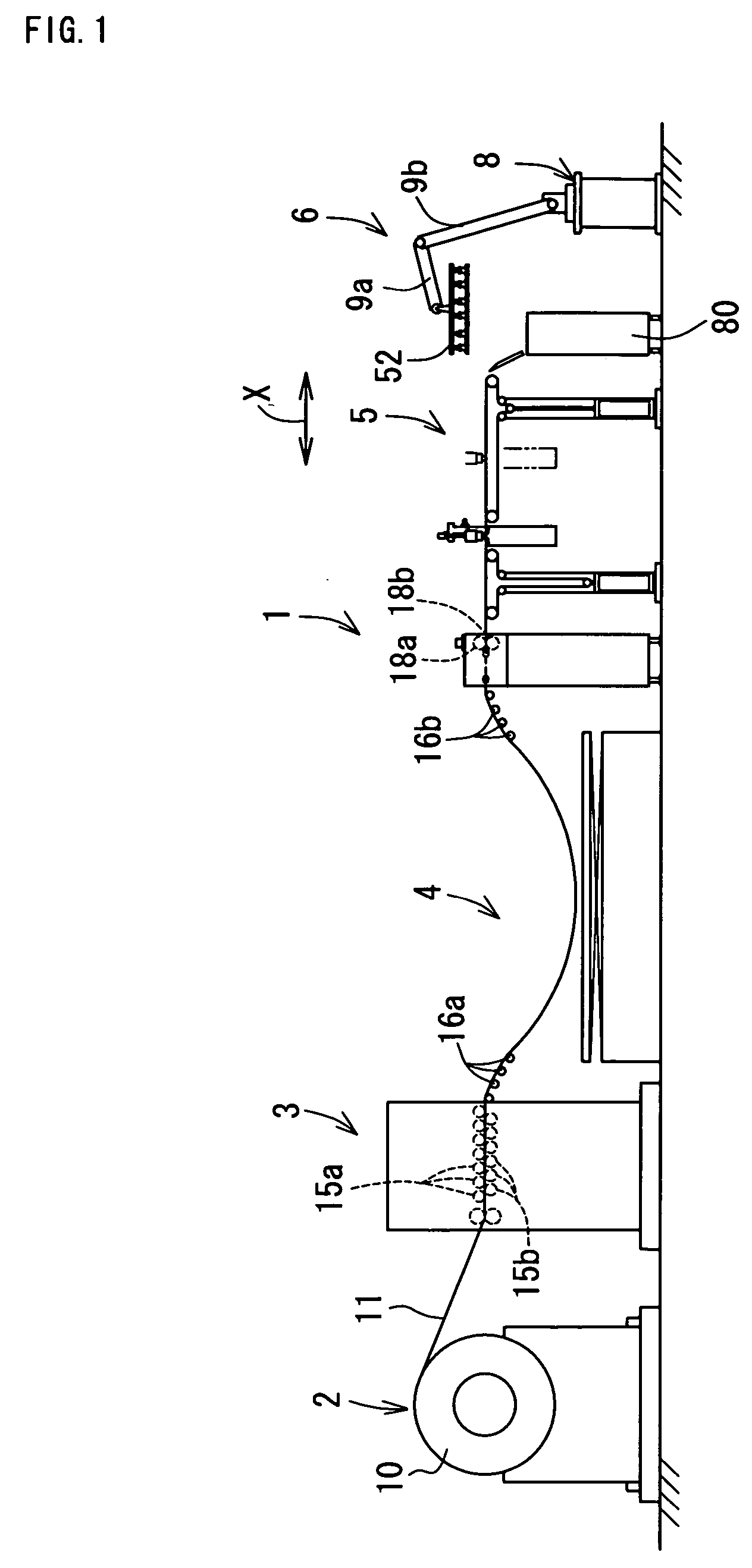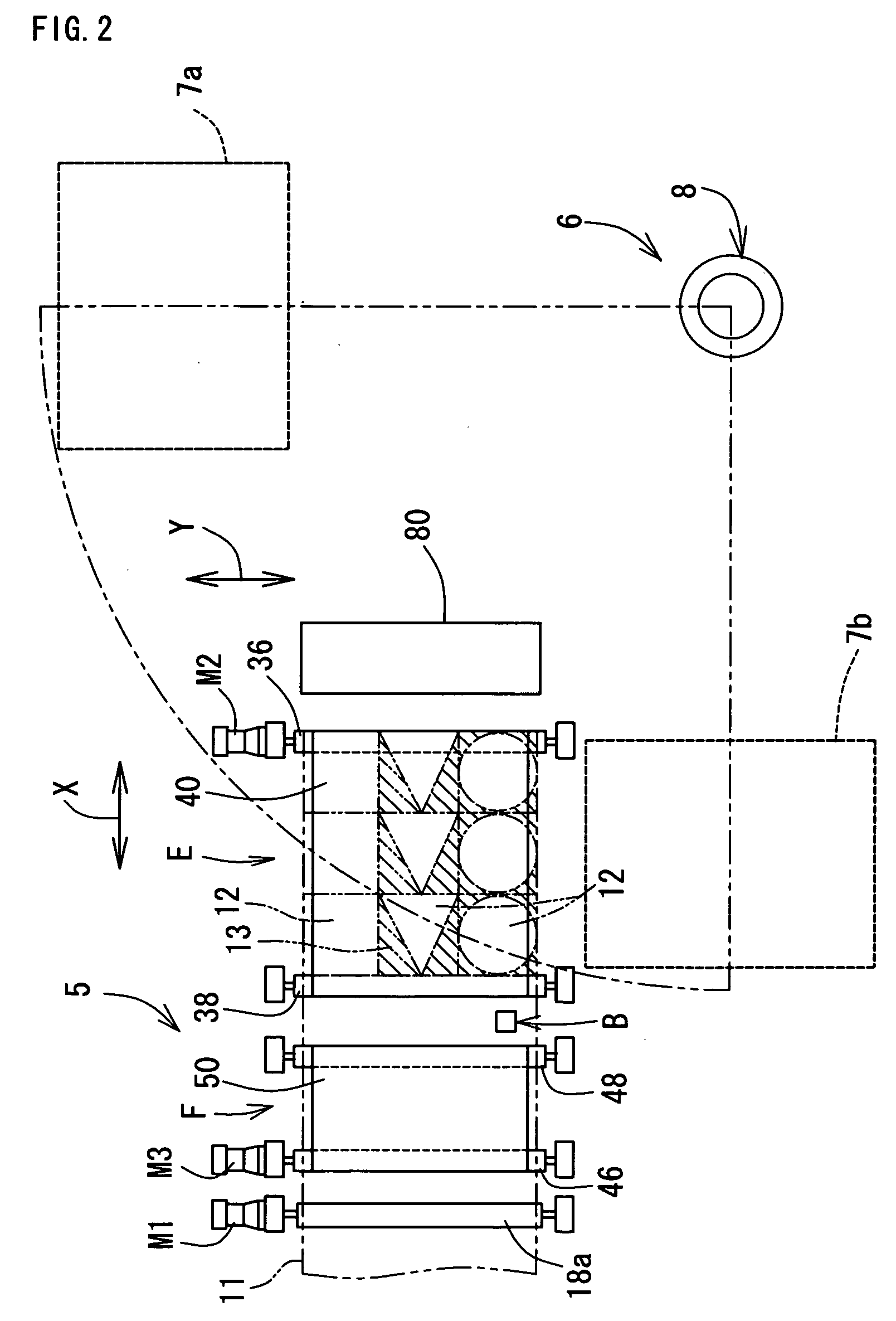Laser cutting device, laser cutting method, and laser cutting system
a laser cutting and laser cutting technology, applied in the direction of manufacturing tools, welding/soldering/cutting articles, transportation and packaging, etc., can solve the problems of poor production efficiency, high manufacturing cost, and difficulty in introducing blanking lines, and achieve the effect of preventing dust adhesion
- Summary
- Abstract
- Description
- Claims
- Application Information
AI Technical Summary
Benefits of technology
Problems solved by technology
Method used
Image
Examples
Embodiment Construction
[0083] The present invention will now be explained below in details.
[0084] The laser cutting system according to the present embodiment is comprised to include a coil strip supporting device, a leveler device and a laser cutting device as will be explained hereinafter.
[0085] The laser cutting system may include any one of a loop forming device, a separating and collecting device and a laser welding device as will be explained hereinafter.
[0086] Structures or sizes of the above “coil strip supporting device” are not particularly limited as long as it can support a coil strip such that sheet-like materials can be wound out from the coil strip.
[0087] Structures or sizes of the above “leveler device” are not particularly limited as long as it is provided on a downstream side of the above coil strip supporting device and as long as it is capable of flatly expanding the materials would out from the coil strip.
[0088] Structures or sizes of the above “loop forming ...
PUM
| Property | Measurement | Unit |
|---|---|---|
| outer diameter | aaaaa | aaaaa |
| width | aaaaa | aaaaa |
| tension | aaaaa | aaaaa |
Abstract
Description
Claims
Application Information
 Login to View More
Login to View More - R&D
- Intellectual Property
- Life Sciences
- Materials
- Tech Scout
- Unparalleled Data Quality
- Higher Quality Content
- 60% Fewer Hallucinations
Browse by: Latest US Patents, China's latest patents, Technical Efficacy Thesaurus, Application Domain, Technology Topic, Popular Technical Reports.
© 2025 PatSnap. All rights reserved.Legal|Privacy policy|Modern Slavery Act Transparency Statement|Sitemap|About US| Contact US: help@patsnap.com



